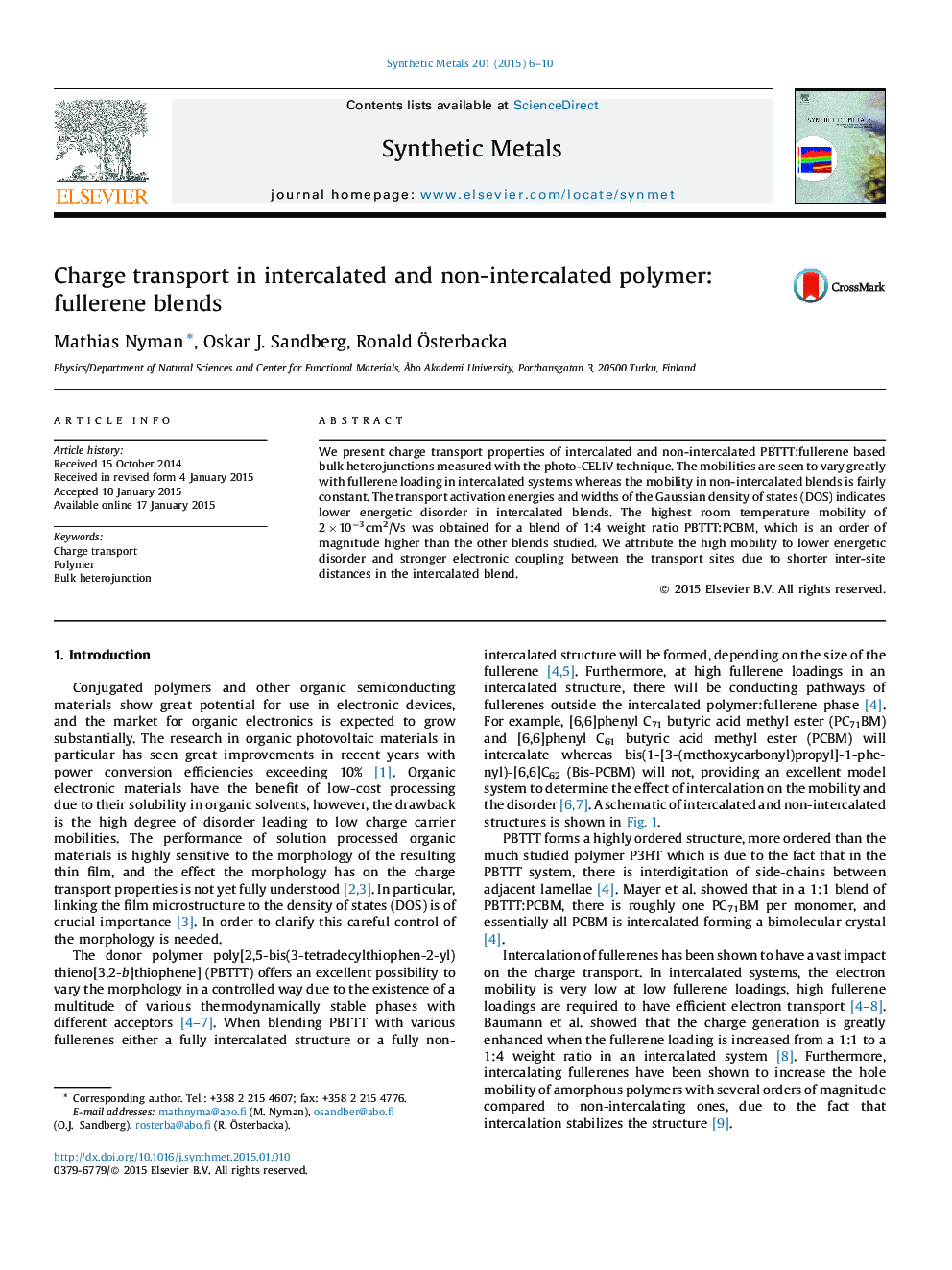| Article ID | Journal | Published Year | Pages | File Type |
|---|---|---|---|---|
| 1440691 | Synthetic Metals | 2015 | 5 Pages |
•The charge transport properties of (non-)intercalated BHJ blends are clarified.•The mobility as a function of temperature is determined.•The mobility is seen to vary greatly with fullerene loading in intercalated systems.•The transport activation energies and Gaussian widths are determined.•Intercalation is seen to decrease energetic disorder.
We present charge transport properties of intercalated and non-intercalated PBTTT:fullerene based bulk heterojunctions measured with the photo-CELIV technique. The mobilities are seen to vary greatly with fullerene loading in intercalated systems whereas the mobility in non-intercalated blends is fairly constant. The transport activation energies and widths of the Gaussian density of states (DOS) indicates lower energetic disorder in intercalated blends. The highest room temperature mobility of 2 × 10−3 cm2/Vs was obtained for a blend of 1:4 weight ratio PBTTT:PCBM, which is an order of magnitude higher than the other blends studied. We attribute the high mobility to lower energetic disorder and stronger electronic coupling between the transport sites due to shorter inter-site distances in the intercalated blend.
Graphical abstractFigure optionsDownload full-size imageDownload as PowerPoint slide
